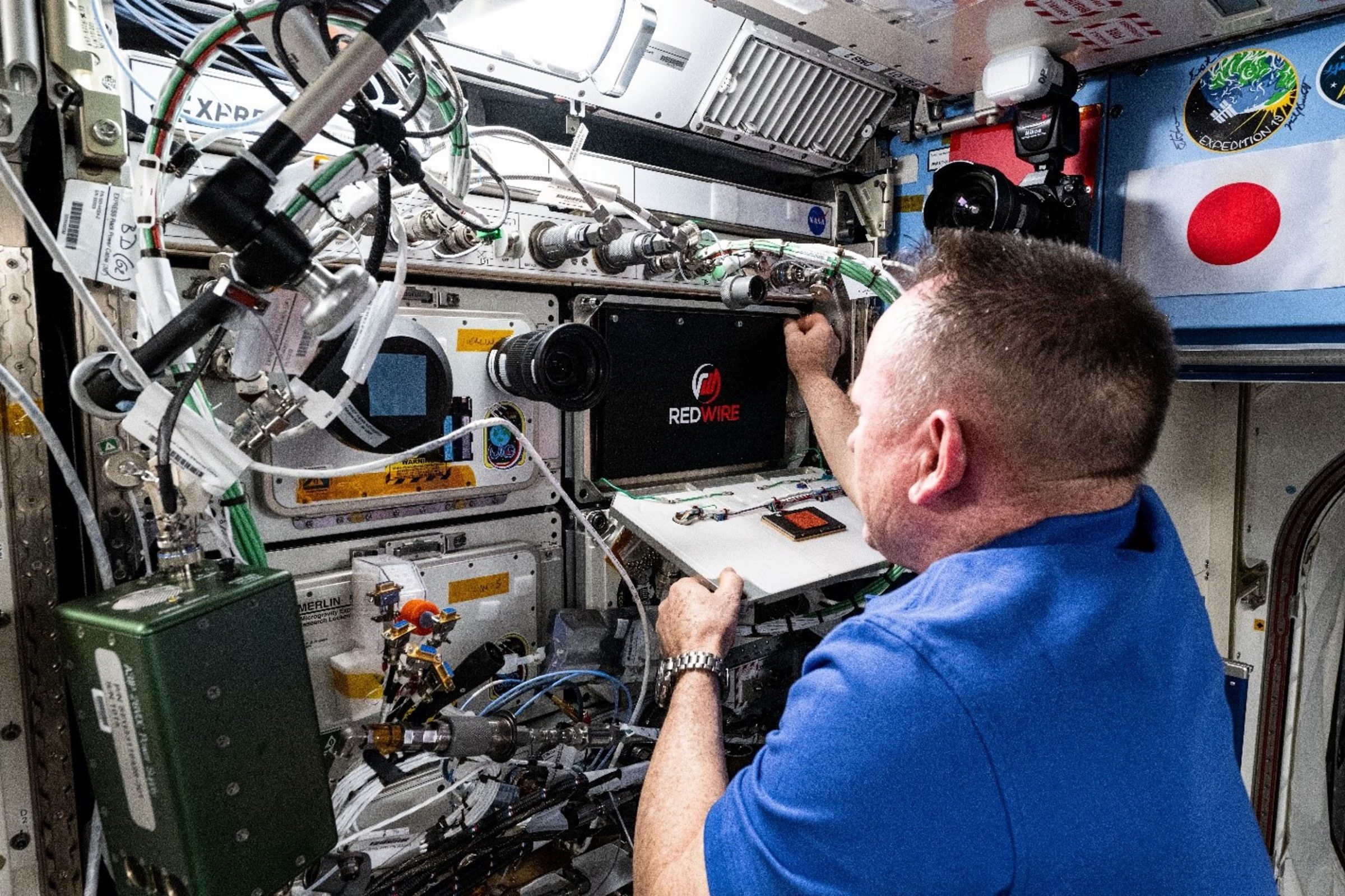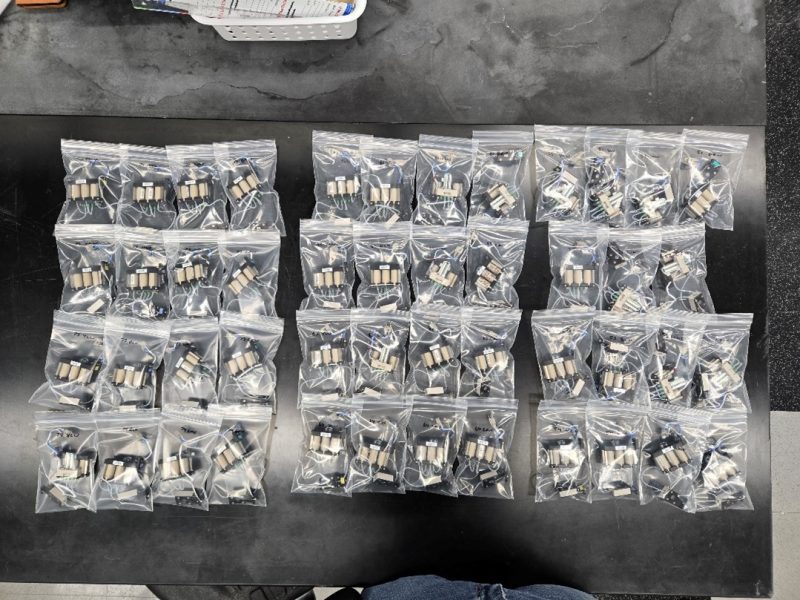
Photo courtesy of NASA
In December, Redwire successfully returned 12 PIL-BOX units and pharmaceutical crystal samples following successful on-orbit pharmaceutical crystallization investigations onboard the International Space Station (ISS). The investigations were conducted for new partners Bristol Myers Squibb (BMS) and ExesaLibero Pharma, along with a second spaceflight investigation with Butler University.

Caption: PIL-BOX fluid loops returned to Earth after being processed as part of the SpaceX CRS-31 mission. The fluid loops with crystal samples were handed over to Redwire partners for further analysis.
Redwire conducted a total of 48 crystallization experiments over the course of 25 days for the three investigations. NASA Astronauts on the ISS installed PIL-BOX units inside the ADSEP-4 facility enabling Redwire engineers to remotely activate each crystallization experiment. Using a microscope integrated within each PIL-BOX, in-situ imagery data was collected for each experiment. Following splashdown, the samples were recovered by the Redwire team at the company’s Merritt Island facility at Kennedy Space Center. The space-grown crystals have been delivered to the partners for further study and analysis.
The Latest Investigations
A PIL-BOX investigation with BMS was conducted to study small and large molecule model compounds and has the potential to enhance drug stability, streamline manufacturing processes, and improve efficiencies across various therapeutic areas, including oncology, immunology, and cardiovascular disease. Another PIL-BOX investigation was conducted in partnership with pharmaceutical startup company ExesaLibero Pharma to study the novel drug ELP-004, which prevents excess bone removal associated with numerous diseases, including rheumatoid arthritis, multiple myeloma, and breast and prostate cancers.
A third PIL-BOX investigation was conducted in partnership with Butler University. Redwire and Butler University hope to produce high-quality seed crystals in microgravity that could be used to manufacture pharmaceuticals on Earth. This is Butler University’s second PIL-BOX investigation.
Groundbreaking Results
The return of these newest crystals marks the latest in a growing series of investigations leveraging PIL-BOX. Redwire has successfully flown and processed 28 PIL-BOX units to date. Previous PIL-BOX investigations have focused on various crystal molecules for treatments of cardiovascular disease, obesity, and diabetes.
Redwire’s PIL-BOX work has yielded groundbreaking results for the pharmaceutical industry. You can learn more about these discoveries in the mission report (Link to mission report).

